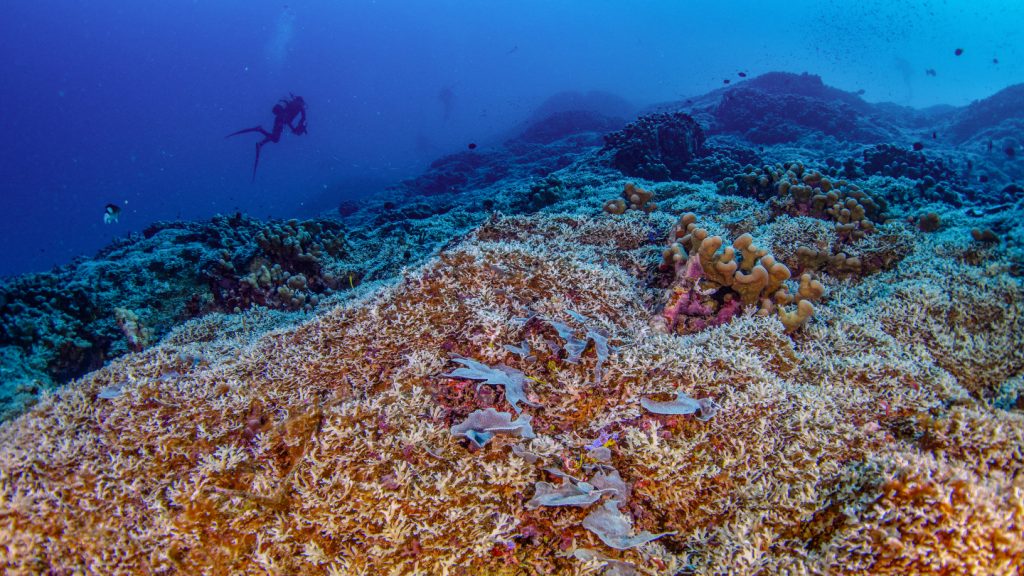The world’s largest standalone coral has been discovered off the coast of the Solomon Islands by the National Geographic Society’s Pristine Seas team. This enormous coral, named Pavona clavus, is around 34 meters wide, 32 meters long, and 6 meters tall, making it longer than the average blue whale and much larger than the previous largest-known coral, Big Momma in American Samoa. The coral is constructed by nearly a billion stony coral polyps, providing crucial habitat for numerous marine species and contributing significantly to the marine ecosystem.
The coral was found by underwater cinematographer Manu San Félix, who stumbled upon it the night before the Pristine Seas team planned to leave the area. The team estimates the coral to be 300 to 500 years old based on its record-breaking dimensions and the growth rate of its species. The longevity of the coral makes it a valuable resource for researchers, as the composition of its skeleton stores information about environmental conditions. This discovery highlights the importance of protecting coral reefs, which face numerous threats such as ocean acidification, pollution, and coral bleaching.
This newly discovered coral is described as a shoulder-blade coral due to its scapula-like ridges that form its body. It stretches along the seafloor, resembling the melting of a scoop of ice cream. The team believes that the coral was built by tiny coral polyps living together and constructing rigid skeletons made of calcium carbonate. Coral reef ecosystems cover only 0.2 percent of the ocean’s area but support over 25 percent of marine species on the planet, emphasizing their ecological significance.
The discovery of this immense coral serves as a reminder of the importance of preserving and protecting marine environments that are both small and mighty. Coral reefs play a crucial role in supporting marine biodiversity and ecosystem health. The team’s findings shed light on the remarkable diversity and resilience of marine life, emphasizing the need for conservation efforts to safeguard these vital ecosystems for future generations. The newly discovered coral serves as a symbol of the beauty and significance of the underwater world and the importance of sustainable practices to ensure its survival.


